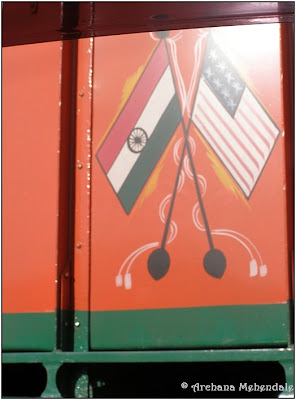“Send me a truck” is what I should have said to the travel agent in Guwahati when he asked me what kind of vehicle I’d like to take to Shillong. Because the Tata Indica that I opted for (a non-AC one since I thought it would be an insult to the wonderful weather to keep window panes rolled up and an air-conditioner on) looked like a toy car amidst hundreds of trucks that dominated the National Highway 40 which connects Guwahati to Shillong. When I asked people around how much time it would take us to reach Shillong by road from Guwahati, not one person could give us a specific answer. All of them very obliquely told us ‘it depends, can’t say anything about the traffic’. I understood what this meant only when I experienced it first-hand and I can say without any hesitation that the Guwahati-Shillong traffic jams are of a different league altogether. They cannot be compared with city jams that one negotiates and curses everyday - where blaring horns, one-upmanship, indifference to traffic rules and ill-managed traffic lights create total chaos. Because the traffic jams on this NH 40 are as laid back as the daily life and there is often no urgency to literally find a way out. As I observed, it also offers a source of entertainment to those living around and I found groups of people in several places simply sitting around, analyzing and getting amused by the impossible jams.
One of the main reasons for the slow movement of traffic is the ongoing work of broadening the existing two lane road into a four lane road (much, much needed!!). The construction work happens on the sidelines as vehicles try to negotiate past it. Along the route, I also found traffic getting held up because of vehicle breakdowns and some really bad accidents. The traffic is primarily made up of trucks carrying coal and other commodities. I saw several trucks that had come as far as from Rajasthan while others carried permits of only four of the seven north eastern states - Assam Assam
Looking at the pictures painted on trucks and reading the slogans they carried was a great way to spend the time. This little ‘ethnography’ of trucks was really fascinating. I found that all trucks carried at least one patriotic message – often ‘India is Great’ or ‘Mera Bharat Mahan’ or “I love India India







No comments:
Post a Comment